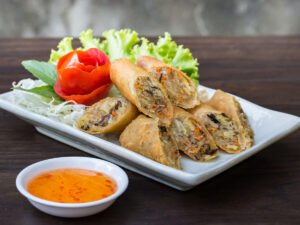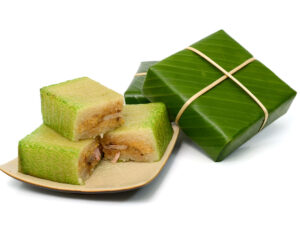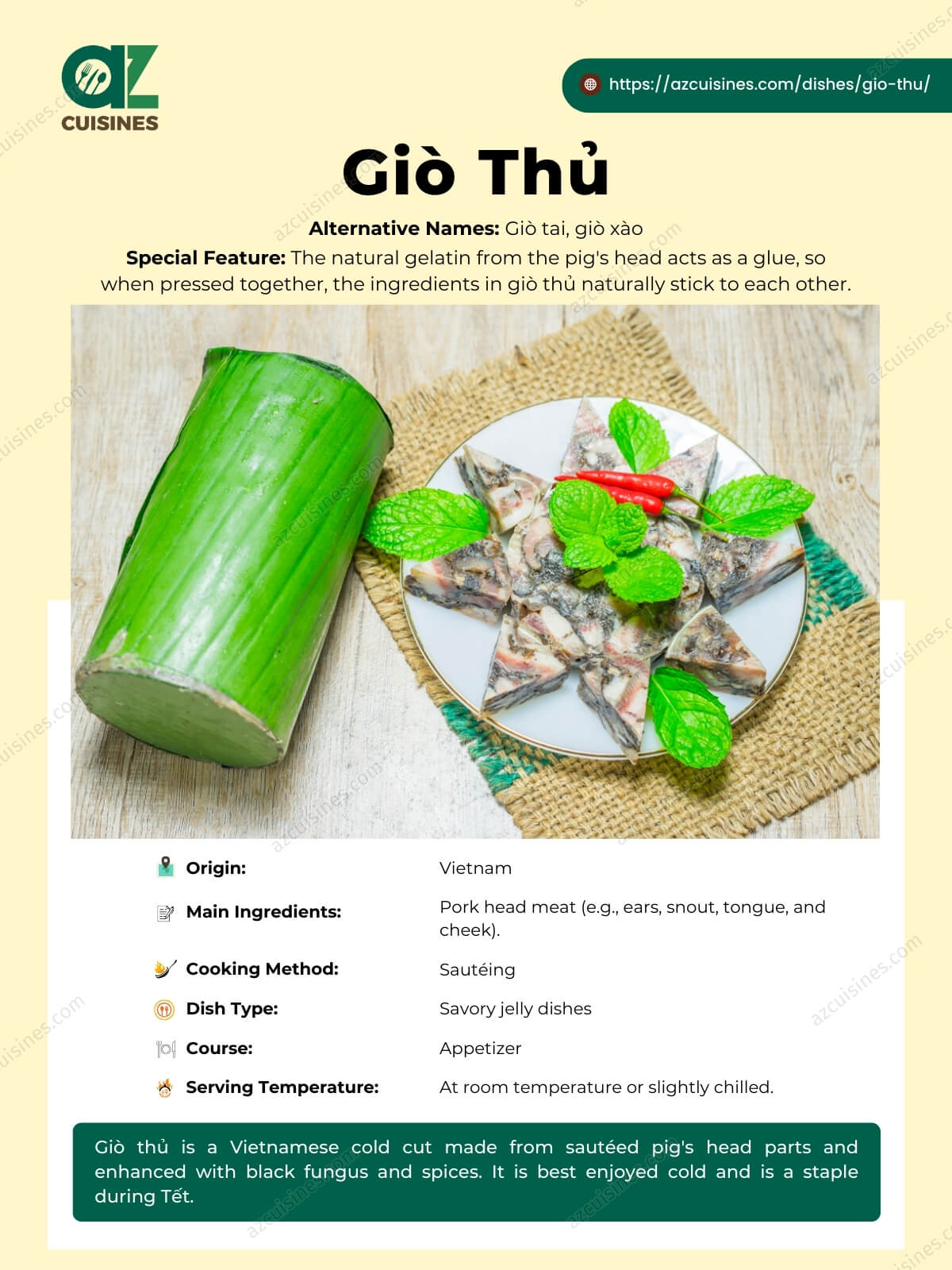Giò Thủ: Basic Information
Pronunciation
Alternative Name(s)
Dish Type
Course
Mealtime
Popular Variations
Giò Thủ: Ingredients and Preparation
Main Ingredients
Main Cooking Method
Preparation Process
Giò Thủ: A Deep Dive
Cultural Significance
Taste
Texture
Aroma
Color
Serving Style
Serving Temperature
Accompaniment
Occasions
Seasons
Special Diets
Calories
Popularity
Popular Similar Dishes
- Aspic
- Head Cheese
Popular Dining Area
Giò thủ, also known as giò tai or giò xào, is a Vietnamese food originating from Northern Vietnam. In English, it is called Vietnamese head cheese.
Overall, giò thủ is a type of cold cut made by sautéing pork head meat (e.g., ears, snout, tongue, and cheek).
Giò thủ also includes other components like black fungus, black peppercorns, fish sauce, garlic, and shallots.
The natural gelatin from the head’s organs binds the head cheese, giving it a chewy and crunchy texture.
For vegetarians, giò thủ can be made with mushroom, tofu, and agar-agar or vegetarian gelatin.
People typically enjoy giò thủ cold, often as a charcuterie during Tết (Vietnamese New Year), accompanied by soy sauce and chili peppers for dipping.
To learn more about the preparation of giò thủ, its advantages and disadvantages, frequently asked questions, and related dishes, please refer to the following sections for deeper insights.
Key Points
How To Make Giò Thủ?
Now, let’s discover the secrets of crafting giò thủ at home with a concise guide with three key steps.
Step 1: Preparing Ingredients
Slice pork head meat into small pieces and mix with other ingredients and seasonings, then marinate for a period to allow flavors to infuse.
Step 2: Cooking Ingredients
Sauté the marinated meat until it becomes sticky and releases some fat. Then add mushrooms and fungus, cooking further until all ingredients are well combined.
Step 3: Forming the Sausage
Let the cooked meat mixture cool slightly, then transfer it to banana leaves or inox or aluminum molds. Compress tightly to form a dense structure so the result is firm after unmolding.
Once you have mastered making giỏ thủ, it would be better choosing ideal delicacies to savor with.
What Are Dishes That Giò Thủ Can Pair with?
As a part of Vietnamese meal during Tết holiday, giò thủ can go with below delights:

Chả Giò
Crispy rolls filled with a mixture of meats, shrimp, and vegetables, deep-fried to a golden brown.

Bánh Chưng
Glutinous rice cake with pork filling, wrapped in banana leaves with a square shape; traditionally made for the Vietnamese New Year
Keep reading to know some advantages and disadvantages of savoring this Vietnamese head cheese.
Pros and Cons of Eating Giò Thủ
Are you interested in knowing the upsides and downsides of giò thủ? Check the below table for more details.
Pros
Cons
Next, don’t forget to give below short questions and answers to understand more about this head cheese of Vietnam.




Truc Tran (Kris)
Senior Food Editor
Expertise
Home Cooking, Meal Planning, Recipe Development, Baking and Pastry, Food Editor, Cooking-video Maker, Vietnamese Food Evaluation Expert
Education
Truc Tran (Kris), an experienced food writer and editor, is great at exploring and describing global cuisines, from simple street food to fancy dining. In her writing, she skillfully mixes different flavors, cooking methods, and culinary traditions, showing the unique character of various cultures through their food and drinks. On azcuisines.com, Kris highlights her knowledge, especially in Asian cuisine and worldwide traditional dishes.